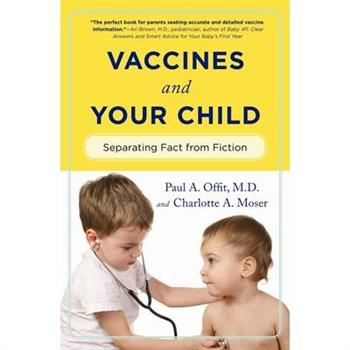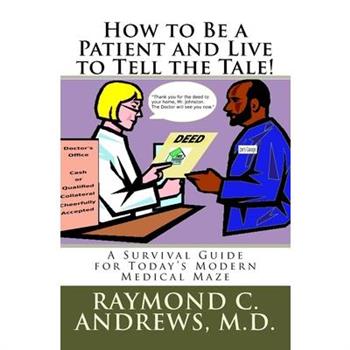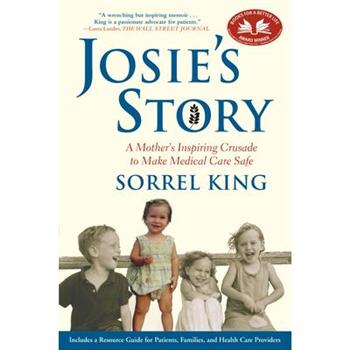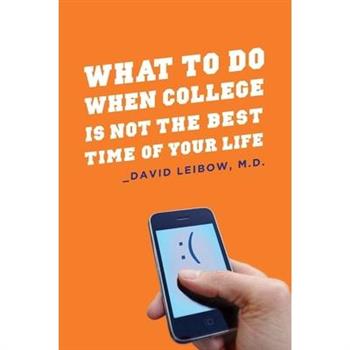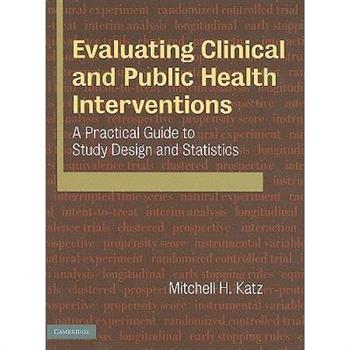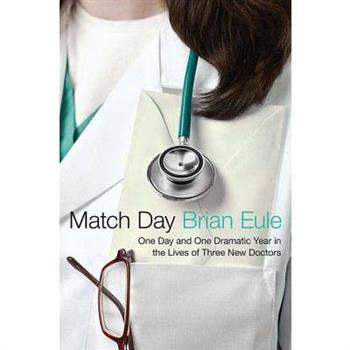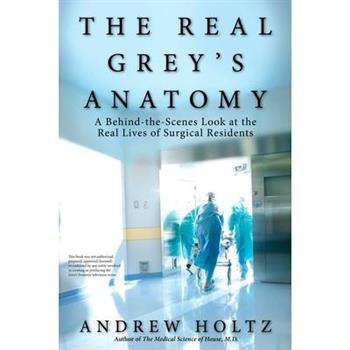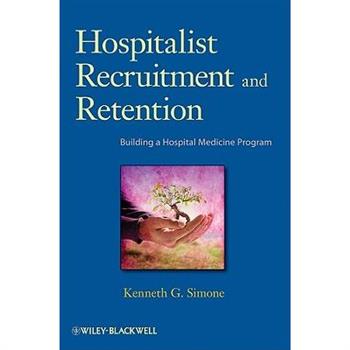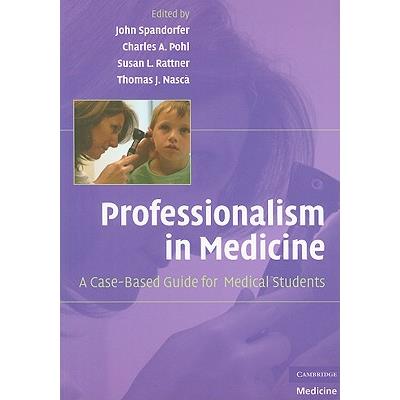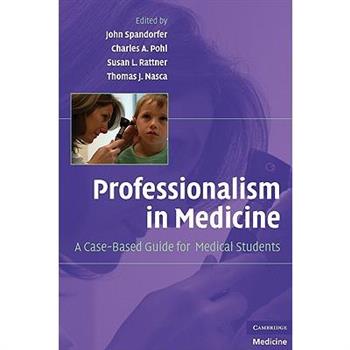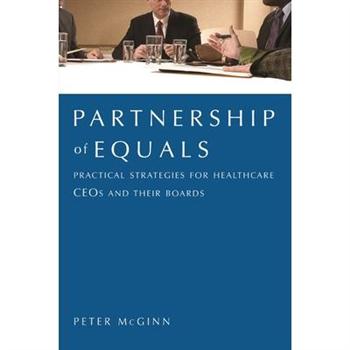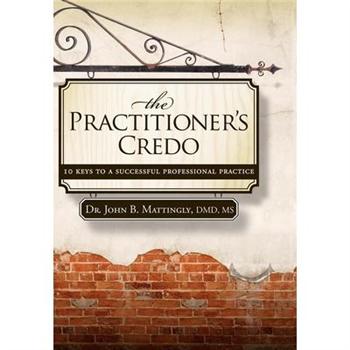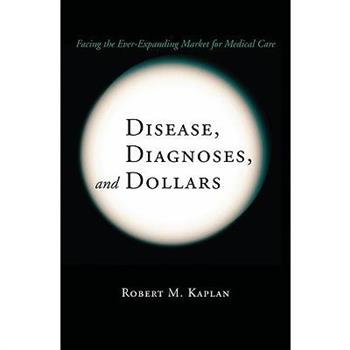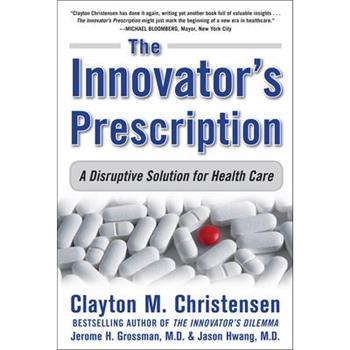Psychiatry in Primary Care
The majority of psychiatric conditions initially present in a primary care setting; the challenge for practitioners is to accurately recognise and diagnose mental illness so that appropriate treatment or referrals can be implemented. Psychiatry in Primary Care is a practical, accessible volume that supplies the key information general practitioners require to achieve this. This significantly revised and updated fourth edition includes 75% new material. Combining the expertise of a general practitioner and a practising psychiatrist, new chapters focus on the considerations of special populations and the use of psychotherapies, including cognitive therapy, problem solving and solution-focussed therapies. An audio CD-ROM gives examples of these therapies in operation to aid the practical application of the theory presented. Evidence based, user friendly and clinical, this is essential reading for general practitioners and primary care mental health workers, as well as trainees in general practice and psychiatry.
Best Practices in Medical Teaching
In medical education a lot of attention is given to what is said, but less consideration is given to how it is said. There is sometimes a misplaced focus on the content at the expense of the experience for the learner. Best Practices in Medical Teaching illustrates the general principles of effective medical presentation. Stahl and Davis are leading experts in medical communication and they effectively explain the practice and methods behind their success. Applying the principles of adult learning, they provide examples of how to design a successful lecture and teach the reader how to influence the behaviors of their audience. Each chapter ends with a chapter summary, progress check, and a performance self-assessment test to ensure that the concepts are understood. This book is an essential guide for all those involved in the process of educating the next generation of doctors and supporting them through their training.
Readings in American Health Care
The account of a Florida death row lawyer's decision to withdraw from the American capital punishment system.
Vaccines and Your Child
Paul A. Offit and Charlotte A. Moser answer questions about the science and safety of modern vaccines. In straightforward prose, they explain how vaccines work, how they are made, and how they are tested. Most important, they separate the real risks of vaccines from feared but unfounded risks. Offit and Moser address parental fears that children may receive too many vaccines too early, that the HPV vaccine may cause chronic fatigue or other dangerous side effects, that additives and preservatives in vaccines cause autism, and that vaccines might do more harm than good. There couldn't be a better moment or more pressing need for this book, which offers honesty--instead of hype--in the quest to protect children's health.
How to Be a Patient and Live to Tell the Tale!
DO YOU KNOW HOW TO AVOID: - unwarranted laboratory tests?-unnecessary hospitalizations?-unessential surgical and medical procedures?dangerous medications? COULD YOU: - intelligently discuss a health problem with your physician?-participate actively and knowledgeably in the diagnostic decision-making?confidently refuse to undergo a suggested therapeutic regimen based upon your current knowledge of medicine? If you answered "no" to any of the above questions, you need to read How to Be a Patient and Live to Tell the Tale! Whether you have traditional fee for service, managed care medical insurance, or none at all, this book will teach you how to protect your health and your health dollars.
Mental, Neurological, and Substance Use Disorders in Sub-Saharan Africa
Millions of people in sub-Saharan Africa suffer from mental, neurological, and substance use (MNS) disorders, and most do not have the resources to obtain treatment. The Uganda National Academy of Sciences and the Institute of Medicine hosted a workshop to discuss the state of care for MNS disorders in sub-Saharan Africa.
Five Fingers
Dr. Tom Kim, a physician specializing in Internal Medicine and Hematology-Oncology, is originally from North Korea. He managed to escape with part of his family during the Korean War at the age of six. His family eventually moved to the United States, and in 1979 Dr. Kim settled in Knoxville, Tennessee with his goal of "repaying his debt to America for the gift of a new life." Dr. Kim was raised in a strong Christian environment, where he was taught to follow the example of Christ and become a light to the world. He believes that all people are challenged to love their neighbors as Jesus commanded. This includes providing our poor neighbors with the health care they deserve, and not simply relying on the government to respond to this need.
How to Talk With Your Doctor
More waiting rooms are filled these days with highly informed medical consumers seeking to partner with their doctors. They want to explore all promising treatments, both mainstream and alternative. To physicians, these patients seem needy and demanding. They expect a lot of attention, but are all too quick to question authority and battle doctors for control of their medical treatment. To patients, though, physicians can come off as stodgy, even arrogant. Many patients neglect to mention the alternative treatments they are using for fear of disapproval. Some walk away entirely from mainstream medicine. The unfortunate pattern in each case is the same: miscommunication and missed opportunities. Patients do not receive the best care available to them, and doctor-patient relationships fall far short of the caring and mutually satisfying exchanges they could be. How to Talk with Your Doctor is a book for patients and doctors alike. It arms patients with the tools and knowledge they need to communicate better with physicians about using the best high-tech and alternative treatments. At the same time, it helps doctors balance their skepticism of complementary and alternative approaches with open-mindedness. Part One looks at how doctors are trained, what practicing medicine is really like, and why so many physicians still resist nonconventional approaches. It also examines how growing interest in alternative treatments is changing the practice of medicine and how it might change even further-for the better. Part Two offers a blueprint for patients and doctors for maintaining optimal health and dealing with chronic illness. It then explores complementary and conventional options for preventing and treating specific conditions. Separate resource sections for patients and doctors list products, websites, and organizations that can help promote better dialogue and medical collaboration so patients receive the most effective therapies medicine
The Role of Human Factors in Home Health Care
The rapid growth of home health care has raised many unsolved issues and will have consequences that are far too broad for any one group to analyze in their entirety. Yet a major influence on the safety, quality, and effectiveness of home health care will be the set of issues encompassed by the field of human factors research--the discipline of applying what is known about human capabilities and limitations to the design of products, processes, systems, and work environments. To address these challenges, the National Research Council began a multidisciplinary study to examine a diverse range of behavioral and human factors issues resulting from the increasing migration of medical devices, technologies, and care practices into the home. Its goal is to lay the groundwork for a thorough integration of human factors research with the design and implementation of home health care devices, technologies, and practices. On October 1 and 2, 2009, a group of human factors and other experts met to consider a diverse range of behavioral and human factors issues associated with the increasing migration of medical devices, technologies, and care practices into the home. This book is a summary of that workshop, representing the culmination of the first phase of the study.
J. C. Blair Memorial Hospital
One hundred years ago, on September 4, 1911, the J. C. Blair Memorial Hospital opened its doors to patients and their doctors. Given to the community in memory of Huntingdon's most successful entrepreneur, the hospital has strived since its inception to achieve the reputation it enjoys today as an institution of advanced medical knowledge, skill, and service. Medical practice has undergone revolutionary change during the hospital's first century; the hospital has worked diligently to keep abreast of that change. Yet its mission--to treat all who enter its doors, without regard to their ability to pay--has remained unchanged. Deep emotions are tied to hospital experiences. Generations of area residents have been born at the hospital, and generations have availed themselves of its services to achieve and maintain good health. A century after its founding, J. C. Blair Memorial Hospital continues to play a vital role in the lives of people in the communities surrounding Huntingdon.
Josie's Story
Sorrel King was a 32-year-old mother of four when her eighteen-month-old daughter, Josie, was horribly burned by water from a faulty water heater in the family's new Baltimore home. She was taken to Johns Hopkins--renowned as one of the best hospitals in the world--and Sorrel stayed in the hospital with Josie day-in and day-out until she had almost completely recovered. Just before her discharge, however, she was erroneously injected with methadone, and died soon after. Sorrel's account of her unlikely path from grieving parent to nationally renowned advocate is interwoven with descriptions of her and her family's slow but steady road to recovery, and ends with a deeply affecting description of a ski trip they took recently. The sun is shining, her children are healthy, and they are all profoundly happy--a condition that Sorrel has learned to appreciate all the more for Josie. The book ends with a resource guide for patients, their families, and healthcare providers; it includes information about how to best manage a hospital stay and how to handle a medical error if one does occur.
What to Do When College Is Not the Best Time of Your Life
If college is supposed to be the best time of our lives, why are so many students unhappy? What causes a well-adjusted and academically successful high school graduate to suddenly flounder when he reaches college? Why might she start to skip classes, binge on alcohol, or engage in unsatisfying hook-ups? Where does the anger and self-doubt come from, and why is it directed at loving parents or the student himself? Drawing on years of experience treating college-age youth, David Leibow, M.D. provides fresh, honest, and realistic answers to these and other important questions. Instead of adventure, liberation, and a triumphant march into adulthood, many college students experience shame, regression, and social and academic failure. Yet by understanding themselves better and making reasonable changes, students can grow from these challenges and turn bad choices into wiser personal and educational decisions. Leibow focuses on issues common to college settings-anxiety and depression, drug and alcohol abuse, laziness and work avoidance, body-image problems, and unhealthy relationships-detailing coping strategies and professional resources that best respond to each crisis. His intimate knowledge of campus life and its unique challenges adds credibility and weight to his advice. Reorienting the expectations of parents and students while providing the tools for overcoming a variety of hurdles, Leibow shows how college can still become one of the best times of our lives.
Evaluating Clinical and Public Health Interventions
Whether you are evaluating the effectiveness of a drug, a medical device, a behavioral intervention, a community mobilization, or even a new law, this is the book for you. Written in plain language, it simplifies the process of designing interventions, analyzing the data, and publishing the results. Because the choice of research design depends on the nature of the intervention, the book covers randomized and nonrandomized designs, prospective and retrospective studies, planned clinical trials and observational studies. In addition to reviewing standard statistical analysis, the book has easy-to-follow explanations of cutting edge techniques for evaluating interventions, including propensity score analysis, instrumental variable analysis, interrupted time series analysis and sensitivity analysis. All techniques are illustrated with up-to-date examples from medical and public health literature. This will be essential reading for a wide range of healthcare professionals involved in research as well as those more specifically interested in public health issues and epidemiology.
How to Survive in Medicine
Medicine is a career that most people consider to be enviable. Whatever one's criteria for a good job, being a doctor ticks a lot of boxes: doctors are needed, respected, well remunerated and can make a difference between life and death Increasingly, doctors are experiencing stress, depression and anxiety, fuelled by the increasing demands of the health services, and the lack of resources to support them. Focussing on the causes, symptoms and management of psychological problems experienced by doctors at all stages in their careers, this book considers the difficulties and stressors of medicine as a career, linking to studies that look at what interventions are successful in the workplace and offering various solutions. Including: A study based over 20 years of doctors' stress factors Case histories to bring the subject to life Guidance on choosing a specialty, dealing with difficult people, stress and demands 37 A valuable resource both for trainers and doctors alike.
Elder Care: Precious Presence
Ninety percent of the population faces long-term care for their life or the life of a loved one. In Elder Care: Precious Presence, author Dr. Alex Kodiath presents personal, true stories of life in long-term care and reflects on the lessons that can be drawn from these stories. With almost twenty-five years of experience in social work in the medical field, Kodiath gives guidance on the spiritual nurturing of those in long-term care and discusses the importance of compassion in caregiving. Elder Care: Precious Presence provides the tools for professionals and families to understand the needs of the sick and the elderly and how to answer these basic needs with love and grace. The stories illustrate the concept of the spiritual grace of presence. Elder Care: Precious Presence provides hope. It demonstrates that the end of a loved one's life doesn't have to be a time of fear, confusion, and guilt. It can, instead, be a time of healing, a time of loving, and a time of dignity, acceptance, and peace.
Elder Care: Precious Presence
Ninety percent of the population faces long-term care for their life or the life of a loved one. In Elder Care: Precious Presence, author Dr. Alex Kodiath presents personal, true stories of life in long-term care and reflects on the lessons that can be drawn from these stories. With almost twenty-five years of experience in social work in the medical field, Kodiath gives guidance on the spiritual nurturing of those in long-term care and discusses the importance of compassion in caregiving. Elder Care: Precious Presence provides the tools for professionals and families to understand the needs of the sick and the elderly and how to answer these basic needs with love and grace. The stories illustrate the concept of the spiritual grace of presence. Elder Care: Precious Presence provides hope. It demonstrates that the end of a loved one's life doesn't have to be a time of fear, confusion, and guilt. It can, instead, be a time of healing, a time of loving, and a time of dignity, acceptance, and peace.
Match Day
Each year on the third Thursday in March, more than fifteen thousand graduating medical students exult, despair, and endure Match Day: the result of a computer algorithm that assigns students to their hospital residencies in almost every field of medicine. The match determines the crucial first job as an intern, and ultimately shapes the rest of his--or, in increasing numbers, her--life. Match Day follows three women from the anxious months of preparation before the match through the completion of their first full year of internship. Each has long dreamed of becoming a doctor. Stephanie Chao is beginning her career as a surgeon. Rakhi Barkowski must balance her husband's aspirations with her own desire to work in internal medicine. Michelle LaFonda moves forward in her quest to become a radiologist, but struggles to find progress in her personal relationship. Each woman makes mistakes, saves lives, and witnesses death; each must recognize the balancing act of family and career; and each comes to learn what it means to heal, to comfort, to lose, and to grieve, all while maintaining a professional demeanor. Just as One L became the essential book about the education of young attorneys, so Match Day will be for every medical student, doctor, and reader interested in medicine: a guide to what to expect, an insightful account of the changing world of doctors, and a dramatic recollection of this pressured, perilous, challenging, and rewarding time of life.
The Real Grey's Anatomy
The ABC medical drama Grey's Anatomy has generated a flurry of interest in how medical professionals really make it through one of the most rigorous educational programs around, but how much of the medical drama seen in Grey's Anatomy is pure entertainment, and how much is an accurate reflection of life both in and out of the OR? In The Real Grey's Anatomy, a well-known medical journalist provides some answers. He examines a group of new surgical residents at a major teaching hospital in the Pacific Northwest as they tackle the roller-coaster ride of long hours, fascinating procedures, mundane office tasks, and emotional ups and downs that comprise the life of a student of surgery.
Hospitalist Recruitment and Retention
The Right Way to Build and Sustain a Successful Hospital Medicine Program This first complete treatment of hospitalist recruitment and retention gives you all the tools and guidance needed to build a new hospital medicine program for your hospital. Moreover, it shows you how to reinvigorate and maintain an established hospitalist program, enabling your hospital to fully benefit from the improved clinical outcomes that a hospitalist approach can offer. All the key elements for building and maintaining an effective hospitalist program are covered, including: Developing a recruitment plan that attracts the right people and clearly sets forth expectations Hiring the best people to meet organizational objectives Implementing an effective retention plan that keeps high-quality staff motivated and committed to excellence Based on the author's extensive experience in both clinical practice and professional consultation with new and established hospital medicine programs, the book covers such critical topics as: Significance of current trends in hospital medicine Key factors in successful hospitalist recruitment and retention Role of the hospitalist in recruitment, retention, and stabilization of physicians in their communities Recruitment and retention of physicians in all specialties is a national challenge, and it is expected to become even more difficult due to an impending physician shortage. As more and more healthcare organizations come to understand and embrace the hospitalist movement, this book will prove essential in recruiting and retaining the staff they need to implement and sustain an effective hospitalist program.
Professionalism in Medicine
Learning medical professionalism is a challenging, evolving, and life-long endeavor. Professionalism in Medicine: A Case-Based Guide for Medical Students helps begin this process by engaging students and their teachers in reflection on cases that resonate with the experiences of life in medicine. Through the book's seventy-two cases, commentaries, videos, and literature-based reviews, students explore the many challenging areas of medical professionalism. Readers will appreciate the provocative professionalism dilemmas encountered by students from the pre-clinical years and clinical rotations and by physicians of various specialties. Each case is followed by two commentaries by writers who are involved in health care decisions related to that case, and who represent a wide variety of perspectives. Authors represent 46 medical schools and other institutions and include physicians, medical students, medical ethicists, lawyers, psychologists, nurses, social workers, pharmacists, health care administrators, and patient advocates.
Professionalism in Medicine
Learning medical professionalism is a challenging, evolving, and life-long endeavor. Professionalism in Medicine: A Case-Based Guide for Medical Students helps begin this process by engaging students and their teachers in reflection on cases that resonate with the experiences of life in medicine. Through the book's seventy-two cases, commentaries, videos, and literature-based reviews, students explore the many challenging areas of medical professionalism. Readers will appreciate the provocative professionalism dilemmas encountered by students from the pre-clinical years and clinical rotations and by physicians of various specialties. Each case is followed by two commentaries by writers who are involved in health care decisions related to that case, and who represent a wide variety of perspectives. Authors represent 46 medical schools and other institutions and include physicians, medical students, medical ethicists, lawyers, psychologists, nurses, social workers, pharmacists, health care administrators, and patient advocates.
Designing Care
Today's health-care providers face growing criticism from policy makers and patients alike. As costs continue to spiral upward and concerns about quality of care escalate, the debate has focused on how to finance health care. Yet funding solutions can't address the underlying questions: Why have costs risen in the first place? And how can we improve the quality and affordability of care? In Designing Care, Harvard Business School professor Richard Bohmer argues that these fundamental questions must be answered. A medical doctor himself, Bohmer explains that health-care professionals are tasked with providing two very different types of care--sequential and iterative. With sequential care, a patient can be quickly diagnosed and given predictable, reliable, and low-cost care. But in the case of iterative care, a patient's condition is unknown, and tremendous resources may be required for diagnosis and treatment, often with uncertain outcomes. Bohmer shows that to reduce costs and manage care effectively, sequential and iterative care situations require different management systems. Through stories and cases drawn from years in the field, he reveals how health-care providers can successfully manage both modes. To do so, they must reevaluate traditional roles and embrace continuous learning across the organization. The benefits of this operational redesign? The predictable, responsive, and lower-cost care today's health-care leaders--and patients--seek.
Partnership of Equals
Effective healthcare organizations need collaborative CEO/board relationships. Author Peter McGinn, a former health system CEO and a former board member, has been on both sides of the boardroom table. This book provides his seasoned advice for building a positive and productive partnership between the CEO and the board. McGinn suggests a new metaphor for the CEO/board relationship: the CEO as the consultant and the board as the client. Throughout the book, he provides strategies CEOs can use to coach and advise board members. He also provides guidelines for board members. There are differences in the roles of the board and CEO, but there is a level of parity as well--it is a partnership of equals. This book explains how to enhance the strengths of each party. Topics covered include: Getting the right people on the board Coaching physician board members Grooming future executive committee members Establishing and maintaining performance standards Managing real or perceived problems and crises Building trust, confidence, and respect Maximizing participation and contributions Making difficult decisions
The Practitioner’s Credo
As practitioners, it is easy to fall into the trap of exaggerated self-importance as we complete our education and move into the world of the professional. At that moment, the aura of being something special is there for the taking. We have worked hard, accomplished a major objective in life goals, attained the cultural level where respect has been secured with the potential to earn income such that we should never have to want for anything of a practical nature. Each of us during our training and schooling has striven to excel to demonstrate superior ability as we competed against other students for recognition of our accomplishments and our abilities. Yet, once we achieve the goal of becoming the professional that we aspire to be, we must step back and reflect on what we have and who we are. A successful practitioner is one who realizes that respect is a two-way street.
Territorial Politics and Health Policy
This study is the first large-scale comparison of policy and divergence in the UK since devolution. Based on extensive original research, it argues that we see substantial divergence in policies and social citizenship among the four parts of the UK as its autonomous political systems try to solve the unpredictable and difficult puzzles of health policy-making.
Experimental Man
Bestselling author David Ewing Duncan takes the ultimate high-tech medical exam, investigating the future impact of what's hidden deep inside all of usDavid Ewing Duncan takes ""guinea pig"" journalism to the cutting edge of science, building on award-winning articles he wrote for Wired and National Geographic, in which he was tested for hundreds of chemicals and genes associated with disease, emotions, and other traits. Expanding on these tests, he examines his genes, environment, brain, and body, exploring what they reveal about his and his family's future health, traits, and ancestry, as well as the profound impact of this new self-knowledge on what it means to be human.David Ewing Duncan (San Francisco, CA) is the Chief Correspondent of public radio's Biotech Nation and a frequent commentator on NPR's Morning Edition. He is a contributing editor to Portfolio, Discover, and Wired and a columnist for Portfolio. His books include the international bestseller Calendar: Humanity's Epic Struggle to Determine a True and Accurate Year (978-0-380-79324-2). He is a former special producer and correspondent for ABC's Nightline, and appears regularly on CNN and programs such as Today and Good Morning America.
Core Topics in Mechanical Ventilation
Mechanical ventilation is a life-critical intervention provided to patients in a wide variety of clinical settings, involving the careful interplay of physiology, pathology, physics and technology. This unique text explains the underlying physiological and technical concepts of ventilation, aided by numerous full colour diagrams, and places these concepts into clinical context with practical examples. Core Topics in Mechanical Ventilation provides a broad and in-depth coverage of key topics encountered in clinical practice, from the initial assessment of the patient to transportation of the ventilated patient and weaning from ventilation. Issues such as sedation, analgesia and paralysis and the management of complications are reviewed, along with a discussion of various ventilation modes and practical advice on patients with pre-existing diseases. Appealing to doctors, nurses, physiotherapists and paramedics, this book is applicable to a wide range of settings including intensive care, anaesthesia, respiratory medicine, acute medicine and emergency medicine.
Disease, Diagnoses, and Dollars
Disease, Diagnoses, and Dollars is about the costs of health care and their impact on health. The book provides a timely criticism of the health care industry and the costs of health care. Within the U.S. health care system, there is evidence that regions that spend more do not have better outcomes, and some evidence suggests that quality of care is lower in the regions that spend more, not less, on health care. The author takes the controversial position that mass markets have been created for services that may offer little or no benefit to patients. He forcefully argues that the overuse of medications and tests runs up the costs of health care. The concluding chapters offer suggestions for policy makers and for patients. Methods for systematically evaluating the cost-effectiveness of new guidelines are discussed. The final chapter provides practical suggestions to enable patients to share in decisions about treatments or tests that can have uncertain benefits.
The Innovator's Prescription
A groundbreaking prescription for health care reform--from a legendaryleader in innovation . . .Our health care system is in critical condition. Each year, fewer Americans can afford it, fewer businesses can provide it, and fewer government programs can promise it for future generations.We need a cure, and we need it now.Harvard Business School's Clayton M. Christensen--whose bestselling The Innovator's Dilemma revolutionized the business world--presents The Innovator's Prescription, a comprehensive analysis of the strategies that will improvehealth care and make it affordable.Christensen applies the principles of disruptive innovation to the broken health care system with two pioneers in the field--Dr. Jerome Grossman and Dr. Jason Hwang. Together, they examine arange of symptoms and offer proven solutions.YOU'LL DISCOVER HOW"Precision medicine" reduces costs and makes good on the promise of personalized careDisruptive business models improve quality, accessibility, and affordability by changing the way hospitals and doctors workPatient networks enable better treatment of chronic diseasesEmployers can change the roles they play in health care to compete effectively in the era of globalizationInsurance and regulatory reforms stimulate disruption in health care
Pale Faces
Who would have thought that something so commonplace as iron deficiency would lead to prehistoric ochre, Egyptian amulets, Renaissance alchemy, Victorian projections of maidenhood, and the astrophysical end of everything? Whether mild or deadly, anemia affects an essential body fluid: blood. In Pale Faces, Charles L. Bardes probes deeply into this illness as metaphor by exploring the impact of both science and culture on its treatment across the ages. His innovative "life" of this condition ranges widely through history, mythology, literature and clinical practice to examine how our notions of specific medical conditions are often deeply rooted in language, symbolism and culture. Delving into the annals of anemia and its treatment, he takes us on a fascinating journey back through the history of medicine--from the Greeks and ancient practices of bloodletting and magic up to the diagnostic rituals of a modern medical office. A scholar of the literary as well as the medical arts, Bardes gives us a beautifully written, free-ranging text, resonant with poetic associations yet anchored in concrete clinical experience. As a practicing physician, Bardes is also able to draw upon his direct experience with patients to demystify the doctor/patient relationship. Through detailed descriptions of the diagnostic processes involved in blood related conditions, as well as the particular understanding of the inner workings of the human body provided by modern medical science, we are treated to the complex ways in which doctors think. Charles L. Bardes, MD, is a practicing physician who teaches extensively at Weill Cornell Medical College, where he directs the Medicine Clerkship and serves as Associate Dean. He is the author of Essential Skills in Clinical Medicine, a guide for students and interns, and Pale Faces: The Masks of Anemia, the first book in the Bellevue Literary Press Pathographies series. He has been the Bernard DeVoto Fellow in Nonfiction at the Bread Loaf Writers' Conference and his essays have appeared in numerous journals, including Agni. He lives in New York.
The FDA and Worldwide Quality System Requirements Guidebook for Medical Devices
This new and expanded second edition maintains the organizational approach of the first and includes the requirements and guidance contained in the Quality System Regulation (QSReg), the ISO 13485:2003 standard, the ISO/TR 14969:2004 guidance document, and, as appropriate, a number of the FDA and Global Harmonization Task Force (GHTF) guidance documents.This second edition also addresses a number of additional topics, such as the incorporation of risk management into the medical device organization's QMS, QMS issues related to combination products, the key process interactions within a QMS, effective presentation of and advocacy for a QMS during FDA inspections and third-party assessments, and future FDA compliance and standards activities. The organization of the guidebook is based on the order of the requirements in the QSReg. For each substantive requirement section there is: A verbatim statement of the QSReg requirement. A description of the comparable requirement in ISO 13485:2003, focusing on any additions to or differences from the requirements contained in the QSReg.Excerpts of the FDA responses to relevant comment groups contained in the Preamble to the QSReg. Excerpts from various FDA guidance documents related to quality management systems. A description of the relevant guidance contained in ISO/TR 14969:2004, focusing on any additions to or differences from the guidance in the Preamble and other FDA guidance documents, and, if useful, excerpts from relevant GHTF guidances. Authors' notes giving guidance derived from the authors' sixty years of regulatory compliance experience. This guidance book is meant as a resource to manufacturers of medical devices, providing up-to-date information concerning required and recommended quality system practices. It should be used as a companion to the regulations/standards themselves and texts on the specific processes and activities contained within the QMS.
Hospital Performance in Brazil
Hospitals are a critical component of the health care provided to many Brazilians. Hospitals--which absorb nearly 70 percent of public spending on health--are also a critical component of the government's budget, and are thus at the forefront of policy discussions. Why hospitals are important in Brazil is easy to understand. What makes hospitals deliver quality care efficiently--or not--is much harder to grasp. Drawing on an eclectic array of research and evaluative studies selected from a mix of sources, 'Hospital Performance in Brazil: The Search for Excellence' analyzes Brazilian hospital performance along several policy dimensions, including resource allocation and use, payment mechanisms, organizational and governance arrangements, management practices, and regulation and quality. Although a few Brazilian hospitals are world-class centers of excellence, many hospitals, including those who serve Brazil's poorest people, are low performers. Yet the Brazilian hospital system is both dynamic and pluralistic, and herein lies is strength. As is shown throughout the book, the foundations for change--approaches, ideas, innovations, and initiatives for addressing the shortcoming of underperforming facilities--are already present throughout the country's hospital system. Building on these strengths, the authors propose a policy- and practice-based hospital reform agenda that should assist policy makers and practitioners in their "search for excellence".
Environment and Health
This title introduces crucial environmental and health issues, since environmental degradation and illness and disease prevent millions of people in many countries from surviving and achieving their potential.













